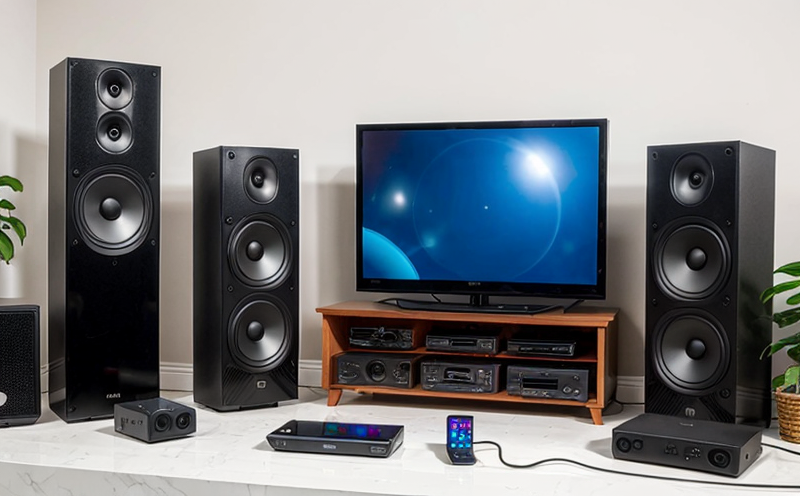EN 60065 Safety Compliance Testing for AV Devices in EU
Ensuring safety compliance is a critical aspect of product development, especially when it comes to consumer electronics and audio-visual (AV) devices. The European Union's standard EN 60065 provides comprehensive guidelines that manufacturers must adhere to for the production, sale, and distribution of AV devices within EU member states. This regulation is crucial because it aims to protect consumers from potential hazards associated with electrical and electronic products.
The standard focuses on various aspects including safety requirements, EMC (Electromagnetic Compatibility) emissions, immunity, and other performance criteria. Compliance with EN 60065 ensures that AV devices meet stringent European regulations and can be sold legally in the EU market. This article delves into the specifics of EN 60065 safety compliance testing for AV devices.
The process involves multiple stages, from initial design reviews to final product testing. Manufacturers must demonstrate that their products comply with all relevant sections of EN 60065 before bringing them to market. This includes ensuring the device does not pose a risk of electric shock or fire, adheres to electromagnetic compatibility standards, and meets other safety requirements.
The first step in this process is thorough specimen preparation. This involves selecting representative samples that accurately reflect the final product. Specimens are then subjected to various tests designed to assess their safety and performance under different conditions. These tests can include electrical insulation resistance measurement, creepage and clearance distances checks, and more.
Testing equipment used in this process includes high-precision meters for measuring voltage and current, specialized chambers for EMC testing, and advanced software for analyzing data. Compliance officers must ensure that all test procedures follow the guidelines set forth by EN 60065 to guarantee accurate results. This ensures that the final product meets not only the letter of the law but also its spirit.
Scope and Methodology table provides a detailed overview of the tests required for different types of AV devices:
| Test Category | Description | Applicable Devices | Testing Requirements |
|---|---|---|---|
| EMC Emissions Testing | Determines the level of electromagnetic interference emitted by the device. | All AV devices, including speakers and amplifiers. | Involves placing the device in a chamber and measuring emissions over a range of frequencies. |
| EMC Immunity Testing | Evaluates how well the device can function in an environment with high levels of electromagnetic interference. | All AV devices, including speakers and amplifiers. | Involves subjecting the device to various types of electromagnetic interference to assess its robustness. |
| Safety Assessment | Ensures that the device does not pose a risk of electric shock or fire. | All AV devices, including speakers and amplifiers. | Involves checking insulation resistance and creepage distances among other factors. |
Use Cases and Application Examples table illustrates practical applications of EN 60065 compliance testing:
| Use Case | Description | Outcome |
|---|---|---|
| Selling AV Devices in EU Markets | Ensures that the device meets all necessary safety and performance standards. | The product can be legally sold within the EU, enhancing consumer trust. |
| Exporting to Non-EU Countries | Provides a strong foundation for compliance with additional testing requirements in other markets. | The product is better prepared for potential future expansions into new territories. |
| R&D and Product Improvement | Identifies areas where the product can be improved for enhanced safety and performance. | Potential for innovation and market differentiation through superior design. |
International Acceptance and Recognition involves recognizing the global acceptance of EN 60065:
- EN 60065 is widely accepted in Europe, ensuring seamless trade within EU borders.
- The standard is often a prerequisite for export to other countries with similar regulatory frameworks.
- Many non-EU markets also accept products that meet EN 60065 standards as a proof of quality and safety.
Frequently Asked Questions provide clarity on common queries:





